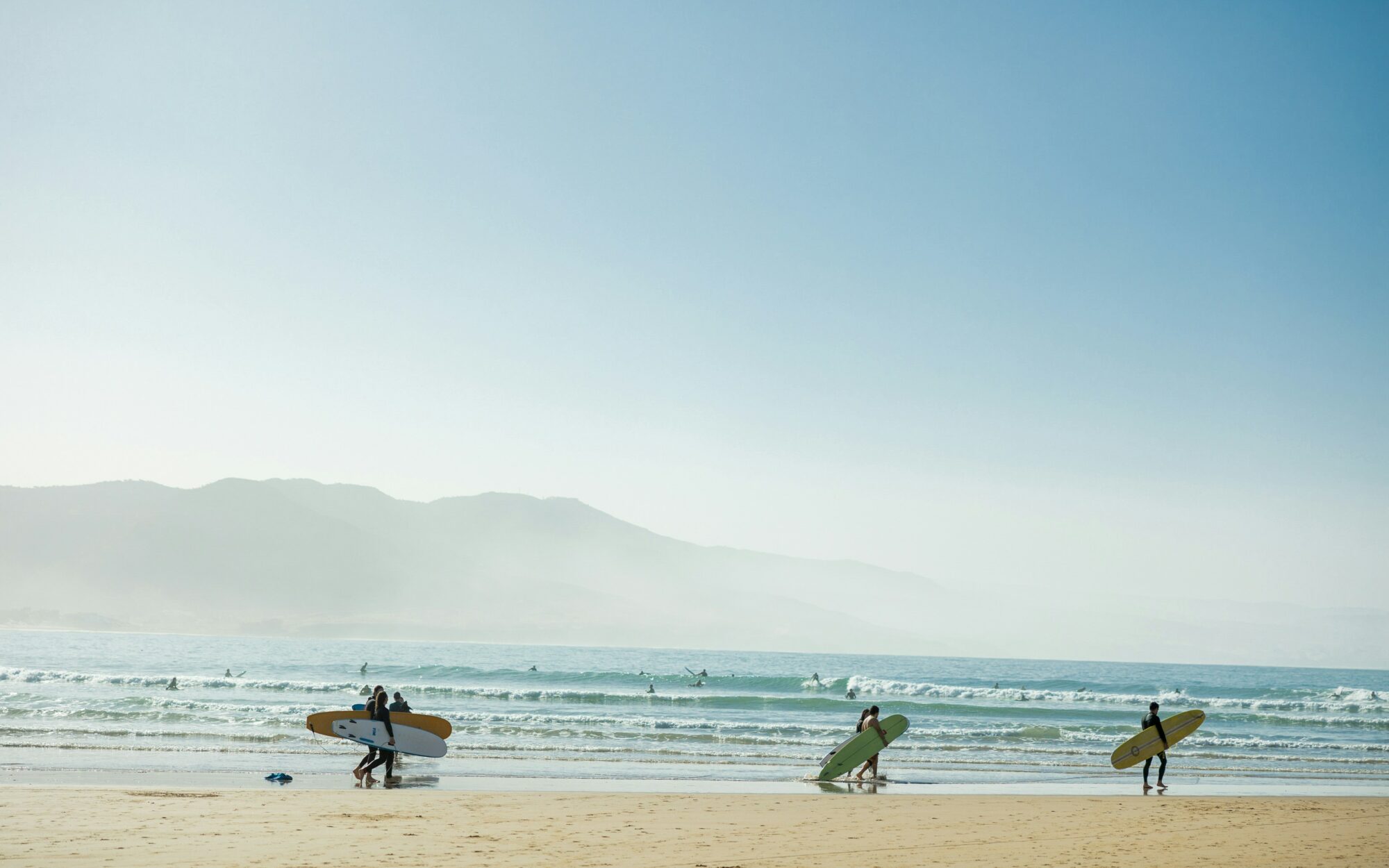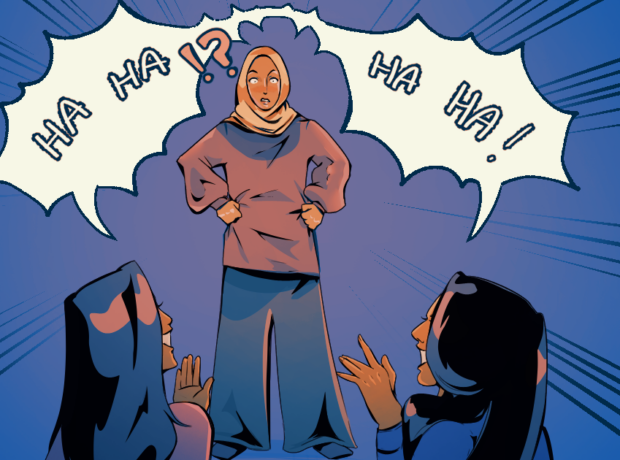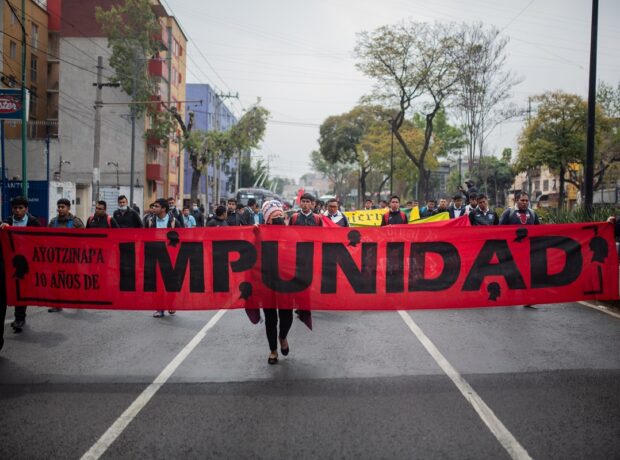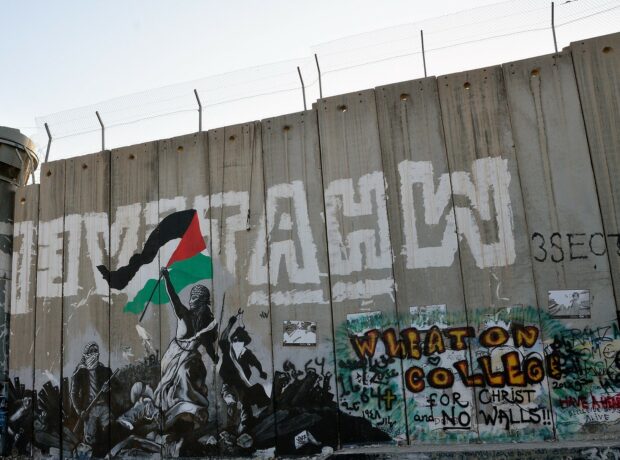The surf season in Morocco lasts from October to March. This year, Nour Ghantous spent those months on the south coast, travelling through three of Morocco’s most up-and-coming surf towns: Imsouane, Tamraght, and Taghazout, where tourists are drawn from around the globe. But beneath this wave of popularity lies a quieter, more troubling undertow – the gradual erosion of Amazigh heritage.
Besides a promise of cheap tagine, consistently cheery weather and clean waves, I came to Morocco because I hoped I could practise my Arabic and become accustomed to a culture not dissimilar to my own Lebanese.
I quickly realised how naive that sentiment had been. To start, Moroccan “Arabic” is much more than just Arabic; it’s “Darija,” an amalgamation of Arabic, which was brought to the country via Arab crusaders after the fall of the Roman Empire, and Tamazight, an entirely different vernacular that belongs to the Amazigh – formerly known as Berber – indigenous people of Morocco, who long predated the Arabs. Tamazight is a language so distinct that it even has its own alphabet.

Locals on the beach in Tamraght, photo by Joanna Lubiatowska via Flickr
Nevertheless, I noticed the two languages twist effortlessly together between locals while my broken Lebanese dialect and I resigned to sitting in southern Morocco’s third group: the expats.
Much like Darija, Amazighs and Arabs initially seem one and the same in Morocco. It is most often the tourists and digital nomads that stand out, with their vegan diets and tendency to party during Ramadan.
I only realised that there might be some cultural differences between Amazigh and Arabic Moroccans when I stopped considering myself a tourist and moved from my hostel in Taghazout to a residential apartment in the much less touristic Tamraght.
It had been a sweltering night, and having woken before sunrise, I was in no particular mood for conversation. My Amazigh taxi driver didn’t seem to notice as we started the five-minute uphill drive to the new apartment.
“Did you hear about the government’s destruction of Imsouane?” He offered into the silence. “Yes, I was there. It’s such a shame,” I responded.
Read more: The Maya Train and other megaprojects threatening southern Mexico’s Indigenous communities
“No, it is not!” He boomed back. “Those people had it coming – they had no permission to build where they built. They were making money practically for free!” His sudden defensiveness snapped me upright.
The houses destroyed by government bulldozers in Imsouane were both Amazigh and Arab. But instead of unifying the communities, the adversity seemed to have driven a wedge between them.
“It’s really very simple,” he said, calmer now. “The Arabs know no bounds when it comes to money. They’ll screw you for all your worth,” he explained.
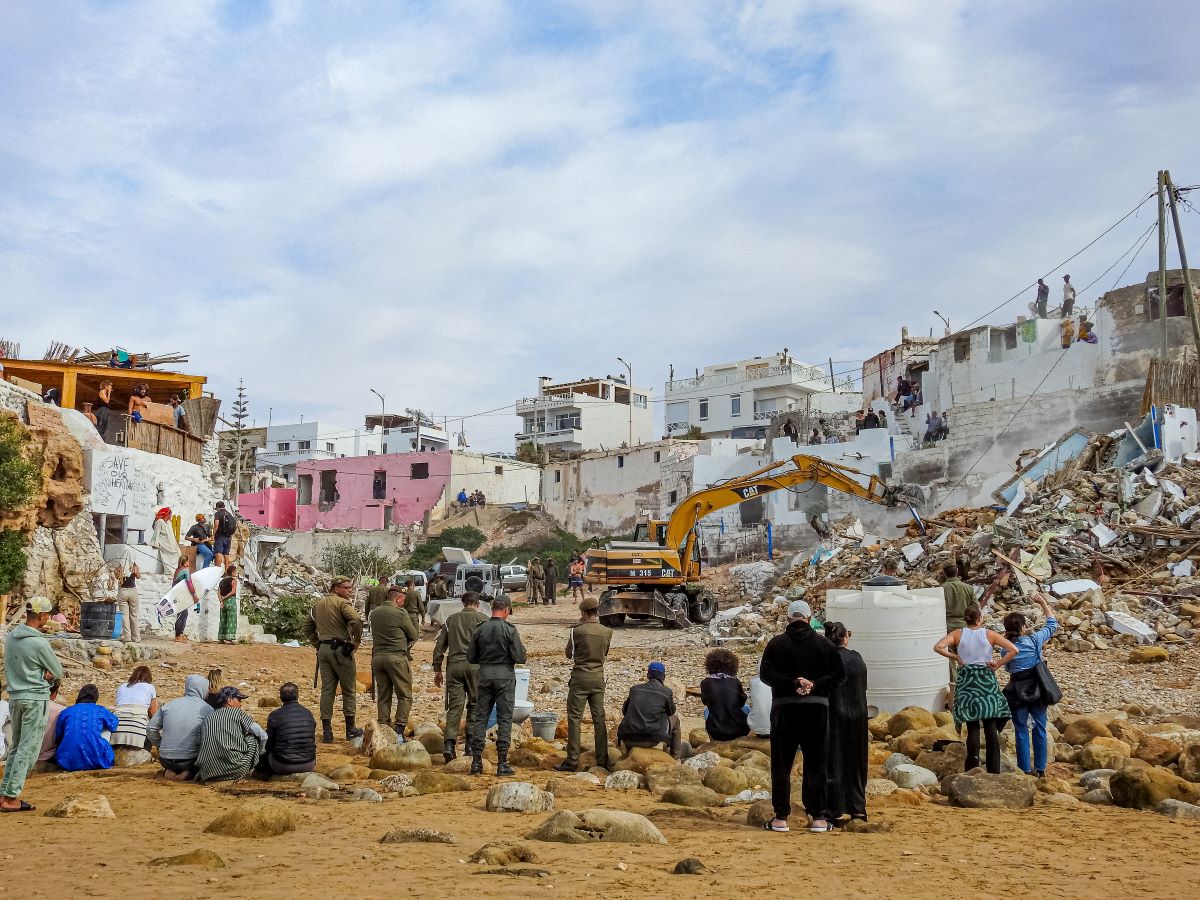
Photo by Nour Ghantous
Until that moment, I had noticed locals were using the words “Amazigh” and “Arab” interchangeably. But a sense of mutual blame between the communities for Morocco’s socio-economic problems was starting to show.
Confused, I asked what he meant, but we had already reached the new place. Pulling up to the top of the hill, he grabbed my bag from his boot, smiled, and said, “One hundred dirhams,” a number I knew to be at least double the ride’s worth.
During my time in Tamraght, I noticed many more micro-aggressions between those who identified as Arab and those who identified as Amazigh, and typically when somebody criticised Morocco’s government or monarchy. It seemed always to be either the Arabs’ or Amazigh’s fault and never the fault of the institution.
What happened in Imsouane?
Morocco is called Al Maghreb in Arabic, meaning sunset. After just one night spent on the West-facing coast, it isn’t difficult to understand why the country is called as such. Most evenings are a splendour: late in the day, around half-seven, the sun and its purples, pinks and pale yellows slip behind the ocean. But the real show starts afterwards; once the sun entirely disappears, the sky erupts in brilliant reds and oranges like I’ve never seen elsewhere.
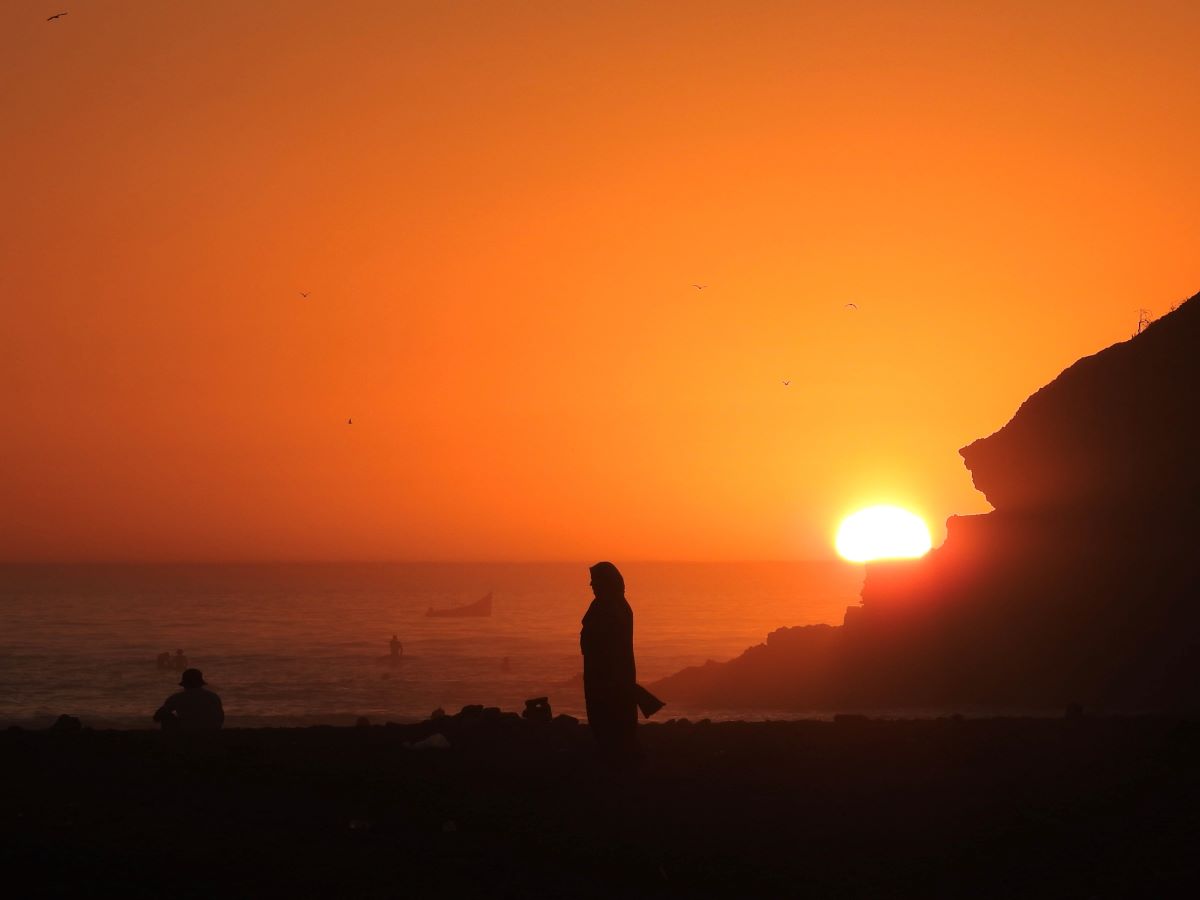
Photo by Nour Ghantous
The natural spectacle provides a poignant backdrop to one of Islam’s five daily prayers, also entitled Al Maghreb. It marks the end of the day and takes on added significance during Ramadan as families gather to break their fast in harmony. With such a divine backdrop as Morocco’s sunset, there is a genuine sense of community as families and friends gather to share food during the darkening hours.
This year, the sacred hour was overshadowed by tragedy in Imsouane and other small coastal towns in Morocco’s South. A month before Ramadan, government officials, backed by bulldozers and militia, descended on these communities with barely a day’s notice, intending to demolish large sections to pave the way for a luxury resort development by Akwa Group, a government-supported facility.
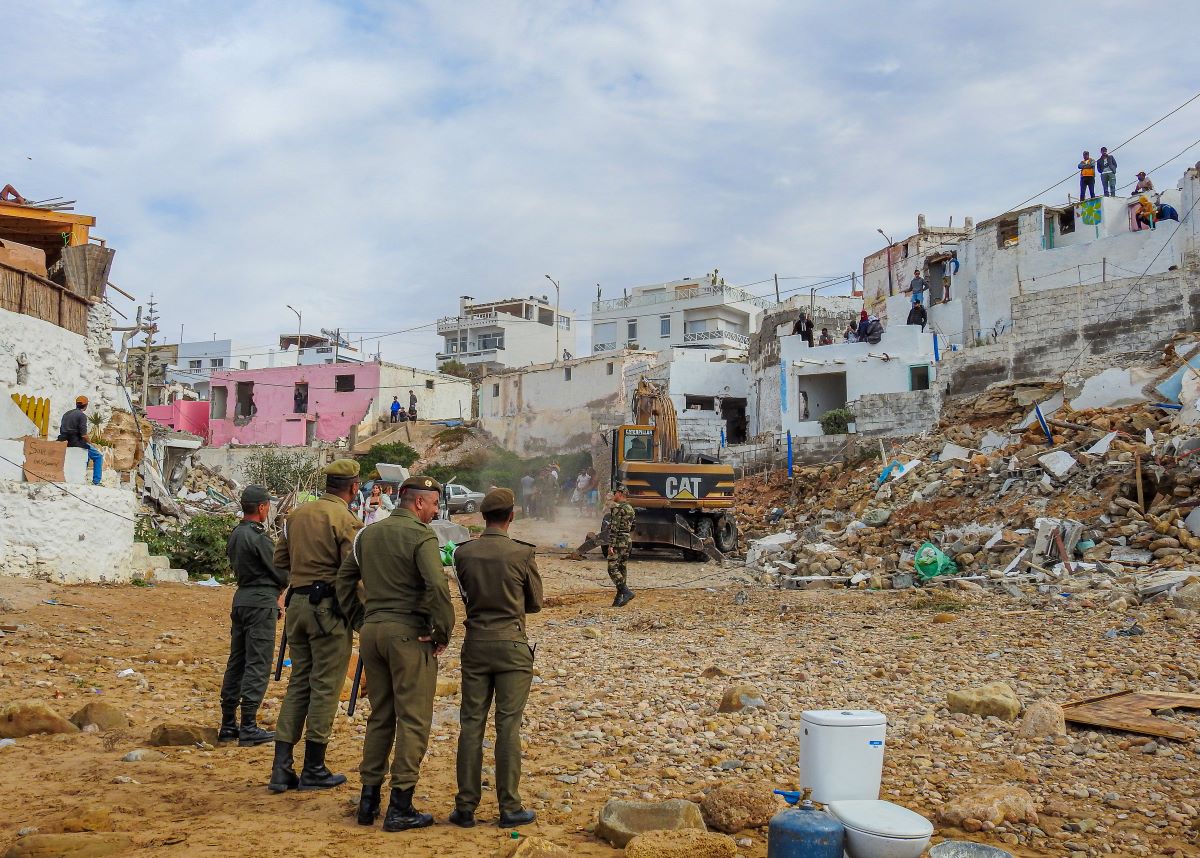
Photo by Nour Ghantous
The community in Imsouane is as small as it is close-knit; with a population of less than 10,000, one can easily walk the length of it in under 15 minutes. The town had its origins as a fishing village, but after the discovery of a wave that offered one of the longest rides on the continent, it soon became a popular spot for surfers.
Once old fishing stalls, the motley shacks that protruded over the stunning bay were repurposed into surfboard rental shops and cafes and became a must-see for visitors. While this brought Imsouane to the map, the appeal of the town’s newly burgeoning economy also spelt the town’s doom under the guise of development.
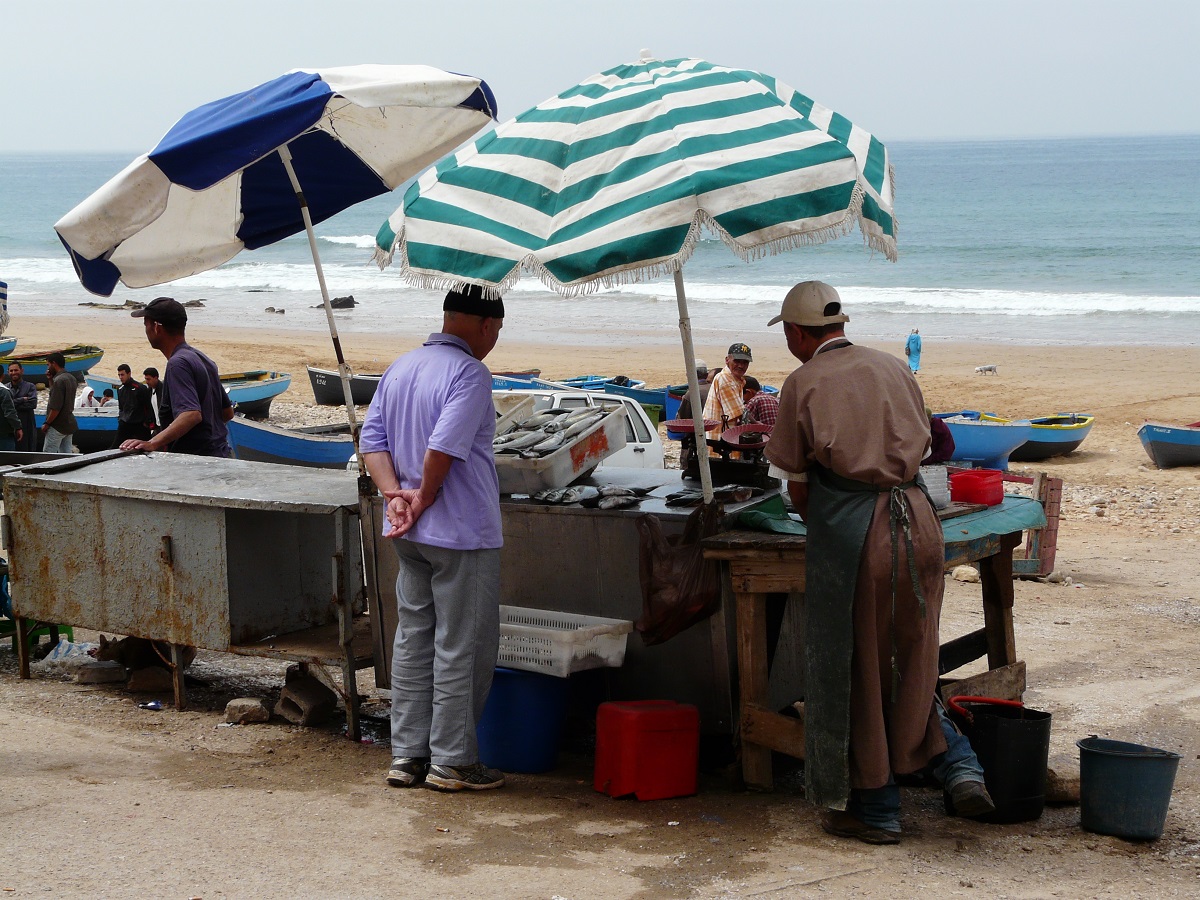
Fishermen in Taghazout, photo by puriy via Flickr
In addition to Imsouane’s burgeoning economy thanks to the graft of its locals, The Moroccan government is gearing up to entice football fans to nearby villages when it hosts part of the 2030 World Cup in the southern city of Agadir. Part of this plan is to build luxury “Tourist Units” along coastal towns that show promise, regardless of any heritage that existed before.
The move reflects the broader narrative faced by Morocco’s Amazigh, who have seen their lands systematically taken under laws that prioritise dispossession and state control. These policies have not only led to the loss of communal lands but have also threatened the cultural and social fabric of indigenous communities across Morocco, making obvious the disconnect between the country’s international commitments to indigenous rights and their implementation.
I met Azeroual Siham on the first day of the demolitions. The government warned residents and businesses along Imsouane’s bay and coast to take their valuables and leave just 24 hours before.
Siham was leading a group of locals and expats protesting the destruction. She is a political activist and member of “Moroccan Douars,” an organisation aiding in developing Douars – indigenous Moroccan communities that typically consist of a group of huts encircling an open space.
View this post on Instagram
That day, business owners stood atop their stores with pickaxes, tearing down their own livelihoods to salvage some wood, and truckloads of people and building materials fled out of the city as bulldozers and army personnel flooded in. I saw many more of Imsouane’s residents fleeing than protesting.
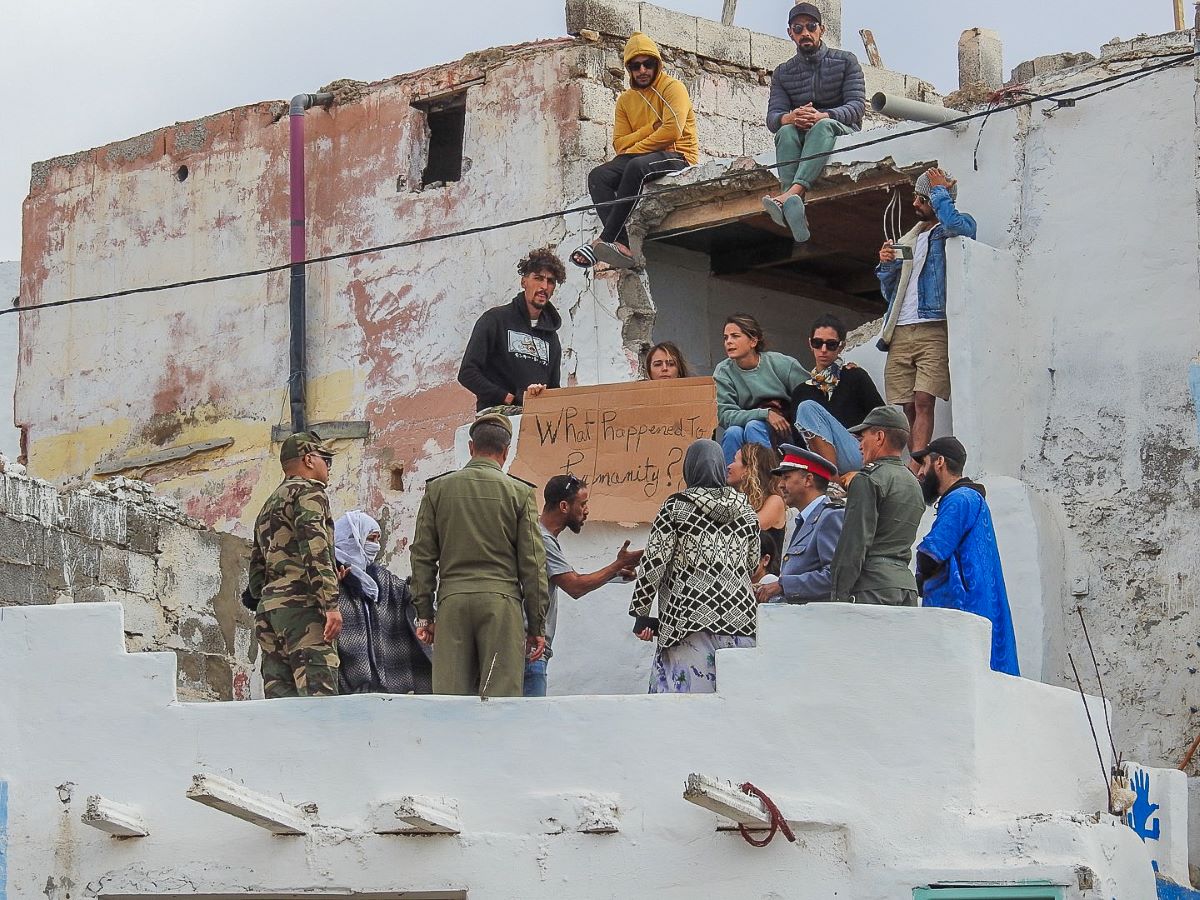
Photo by Nour Ghantous
“I wanted to fight alongside these people, but they scattered,” Siham tells me. “And the rest of Morocco is not willing to wake up and speak up. We are facing a giant octopus. We tried raising awareness, and we tried legal action, but we needed the masses to step in.”
Why is there a lack of motivation to fight back? I ask her.
“Because [the victims] forgot who they are, they forgot that Amazigh means ‘the free people of the free land’. Because of persecution; Because [the government] hammered in their brain that they have no rights, the country can take whatever since [the Amazigh] have no papers.”
But why don’t the Amazigh have papers? Doesn’t the Moroccan government provide these?
“According to the government, Amazigh people do not have the right to ownership, mostly.” Siham says.
The Dahir law of August 12, 1913, initiated the process of formal land registration, a move that – according to UNOCHA – often disenfranchised the Amazigh by imposing French legal concepts of land ownership, which were alien to the traditional Amazigh communal land tenure systems.
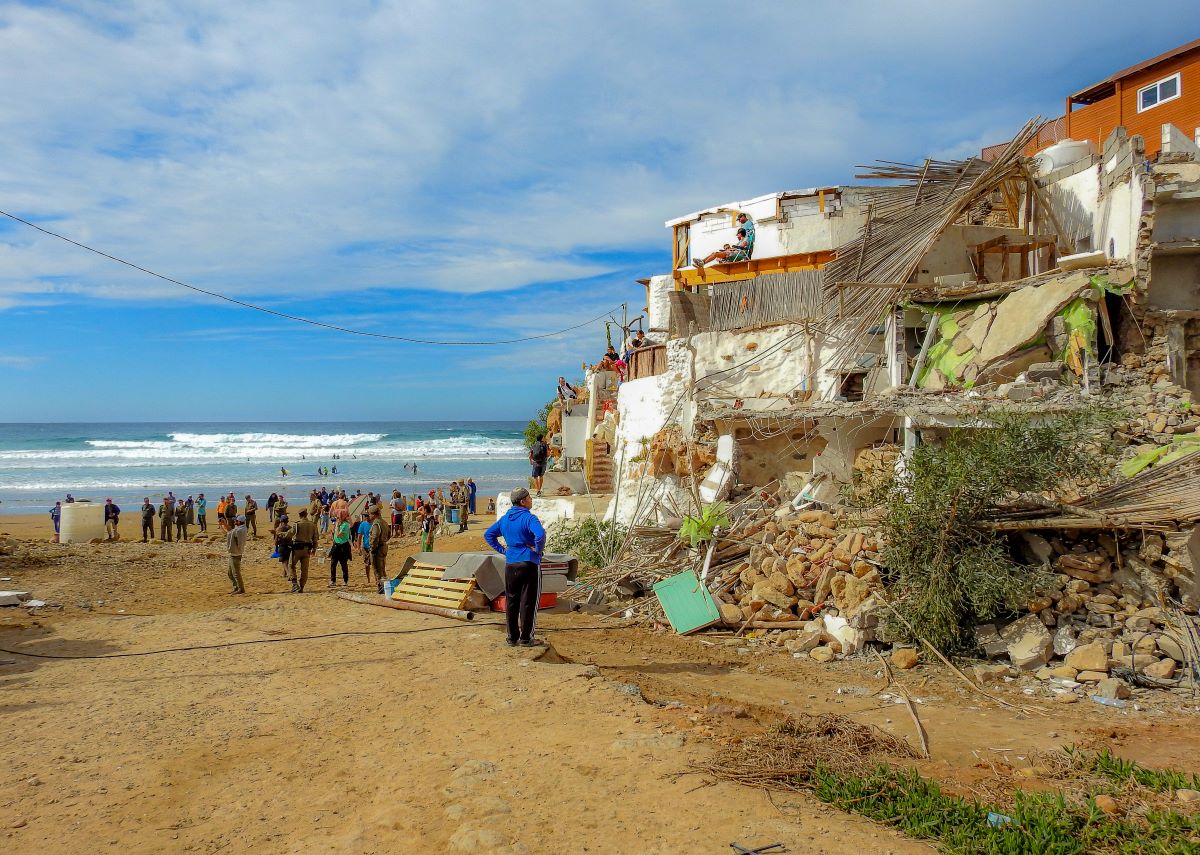
Photo by Nour Ghantous
Another law came a decade later – the February 18, 1924 decree, specifically regulating collective lands. This law fundamentally alters traditional Amazigh communal ownership by introducing state oversight and control over these territories.
In 2019, legal reforms were introduced to modernise the governance of communal lands. These reforms focused on the administrative supervision of tribal Soulaliyate communities and the management of their assets, further increasing state control and restricting the traditional rights and autonomy of Amazigh communities over their lands.
On the day I met Siham, some of the stalls bulldozed were technically illegal, but the government was aware of their existence beforehand. And it was the economic successes brought by those same surf shops and rentals that had attracted the developers to the site looking for a slice of the pie.
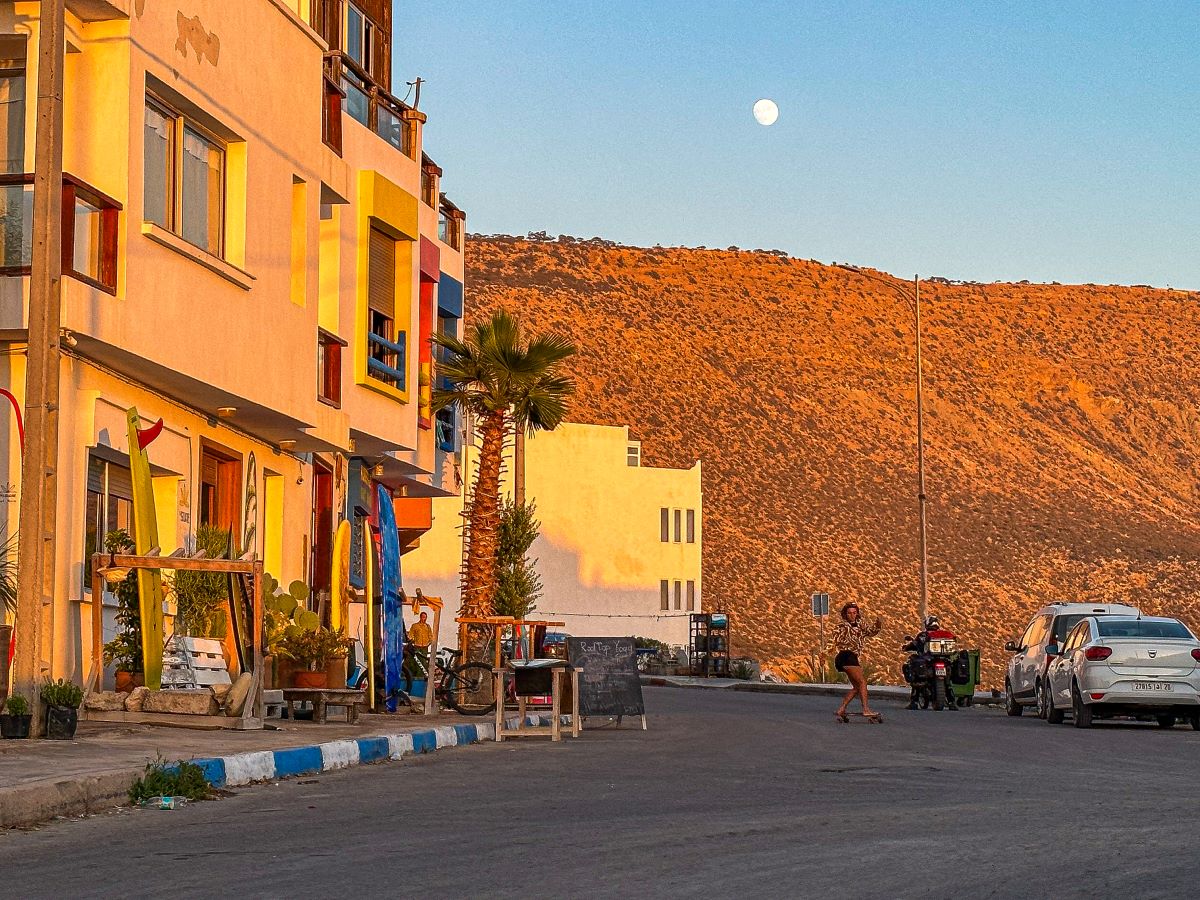
Photo by Nour Ghantous
The ancient troglodyte houses were stone buildings carved into the cliffs overlooking Imsouane’s beach, a landmark of Imsouane’s essence. The rumour that day was that these so-called illegal buildings existed long before the Moroccan law requiring planning permission had come about.
Siham says the troglodyte houses were built by indigenous Amazigh people before the need for planning permission, but there are reasons these dwellings are difficult to date.
“[Records] might say the 1970s,” she says, “but when it comes to indigenous people, [Amazigh] history is deeply hidden, with no records and no proof that it was there hundreds of years ago. Our history was mostly written by Arabs or Europeans. Historians are [still] trying to rewrite history and correct all the lies we’ve been told about the history of this country.”
In conversations with locals, both Amazigh and Arab, some defended Morocco’s government and king very strongly. Remembering my taxi driver in Tamraght, I asked Siham why she thought this was. Are Morocco’s education system and society influenced by propaganda?
“Yes”. She said. “[It’s because of] education and brainwashing.”
“[Some] Moroccans have so many double standards. They are ready to defend Palestine but leave the Atlas earthquake survivors to die in the cold. They are ready to fight the government for some dogs they have never met but will abandon their people, who fight for their homes and their lives.
“Our country is falling apart,” she adds, “yet Moroccans [dare] to say: ‘Our government is a criminal zionist because of Palestine’, but they can’t say they are criminals because they sucked Morocco out of its resources and are selling every part of it. By the time we wake up [to these atrocities], our country will be gone.”
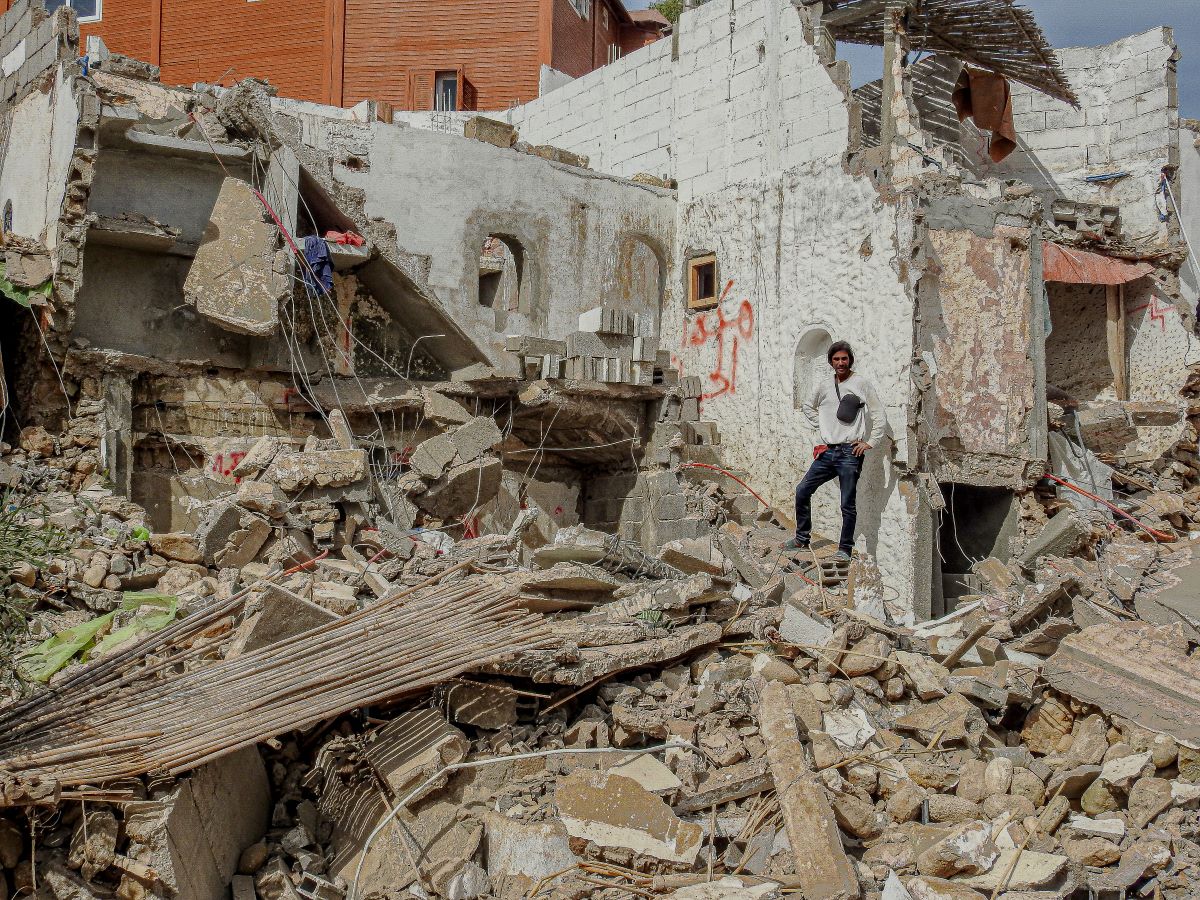
Photo by Nour Ghantous
Morocco has not adopted the UN Declaration on the Rights of Indigenous Peoples, which obliges governments to protect indigenous peoples’ rights and, importantly, consult with them on projects that may affect them. The Government has also not ratified The International Labour Organisation’s (ILO) Convention 169, which obliges governments to ensure involvement in decision-making, protection of land ownership, cultural preservation, access to education and employment and protection from discrimination for indigenous people. Demolitions are ongoing, and Siham tells me the next to come are at the caves of Aglou.
As the sun sets on Imsouane and on the heritage of many of Morocco’s small towns, casting brilliant reds and oranges across the sky, the resilience of young people emerges stark against the encroaching darkness.
Their lingering light is a testament to the enduring spirit and solidarity of a town united in adversity. The future of Morocco’s heritage, particularly that of the Amazigh, hangs in a delicate balance, asking how progress and preservation might coexist.
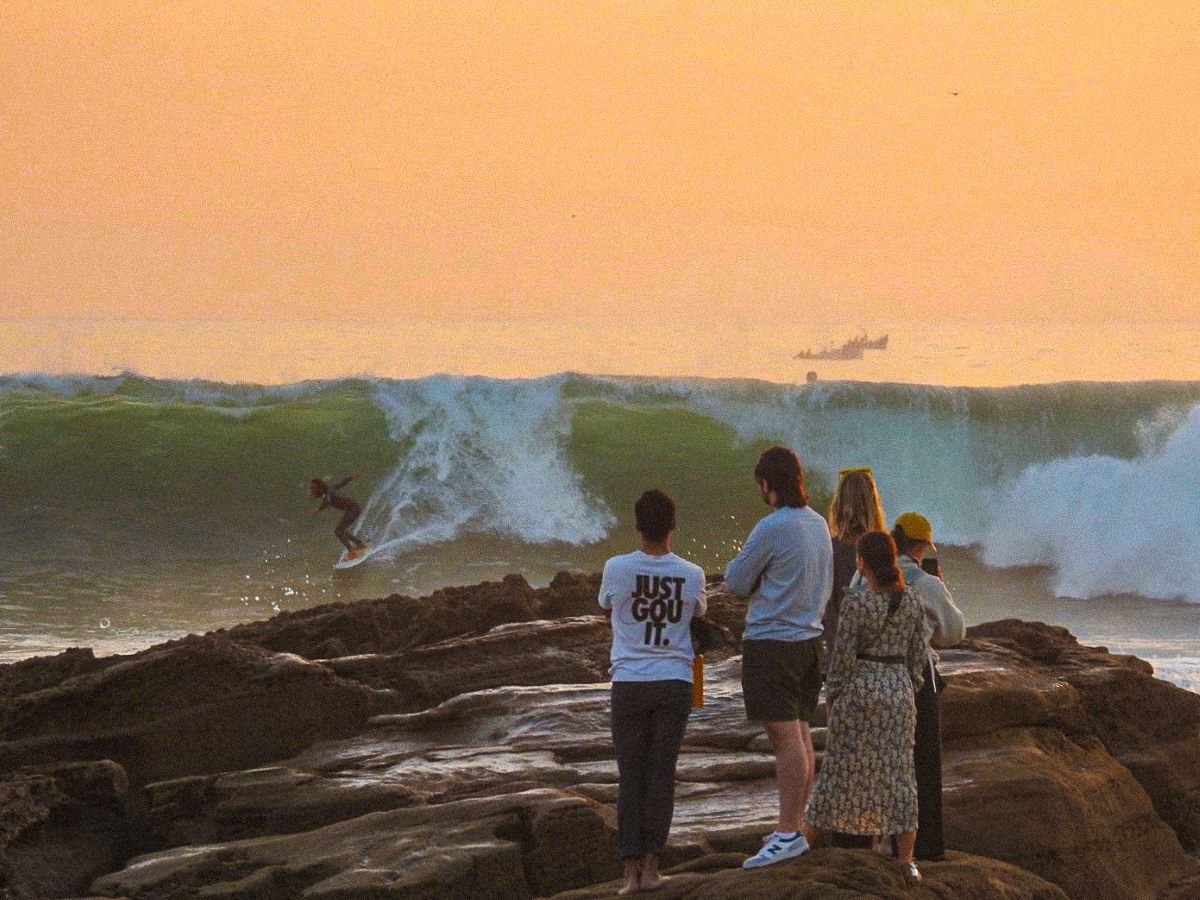
Photo by Nour Ghantous
Featured image by Natalia Łączyńska via Unsplash
Read more:
